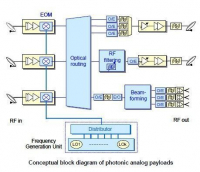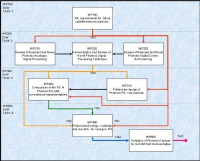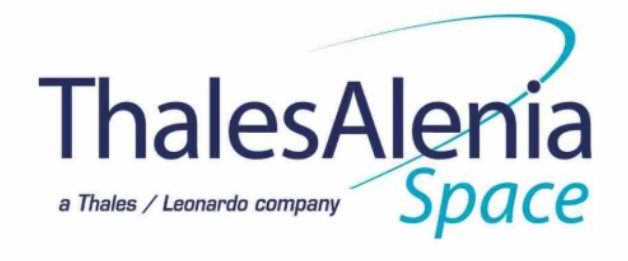
-
StatusCompleted
-
Status date2013-12-12
-
Activity Code1B.044
3. To define a preliminary design and layouts of innovative, digital and analogue payload architectures making use of photonic technologies, and to perform a comparison between the preliminary design of the photonic payloads with the corresponding conventional implementations, and outline the benefits that can justify the use of photonic technologies in future satellite communications missions. (“TN3: Preliminary Designs of Photonic Payload architecture concepts, Trade off with Electronic Design and Selection of Photonic Payloads to be further investigated”)


Identify the benefits coming from the application of photonic technologies in TLC P/L.
Define mission/payload architecture showing a real interest (technical and economical) of optical technology versus microwave technology.
Establish new design rules for optical/microwave engineering
Develop hardware with an emerging technology in the space domain
- Payload Mass;
- Payload Volume;
- Payload Power Consumption and Dissipation;
- Data and RF Harness;
- EMC/EMI and RF isolation issues.
- Payload functionality;
- Selected platform size;
- Launcher selection;
The study permits to:
·
identify the benefit coming from the migration from conventional to photonic technology
·
To identify critical optical components which needs of a delta-development
·
To identify a Photonic Payload for in-orbit demonstrator
The study is completed










